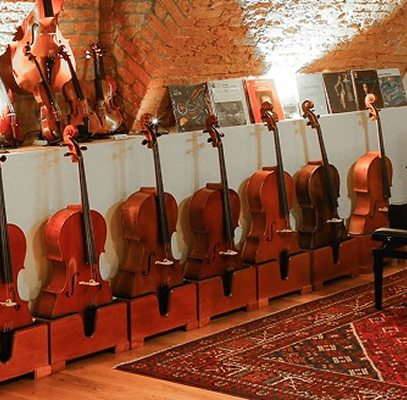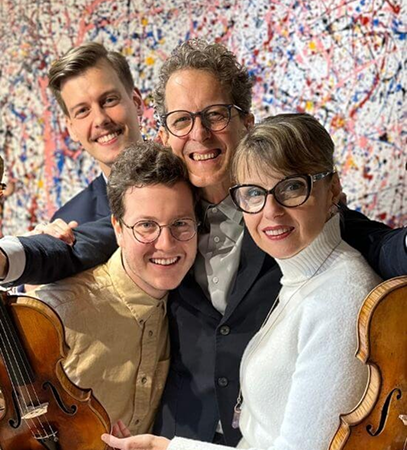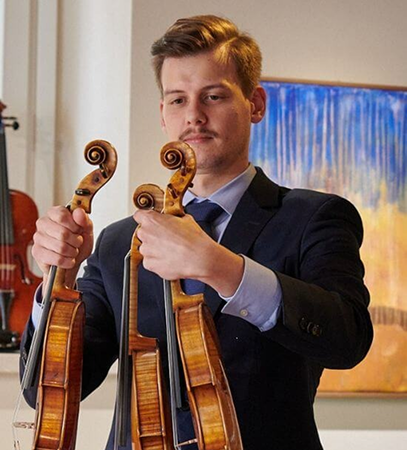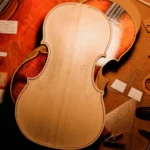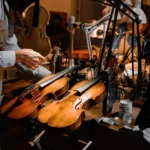Giovanni Battista Guadagnini: Life and Legacy of an Italian Luthier
Back to BlogExplore the life and artistry of Giovanni Battista Guadagnini, whose distinctive violins and innovative style shaped eighteenth century craftsmanship and continue to inspire musicians today.
Giovanni Battista Guadagnini is regarded as one of the most influential violin makers of the eighteenth century. His instruments are celebrated for their rich tonal personality, exceptional playability, and unmistakable craftsmanship.
Often mentioned alongside Antonio Stradivari, Giuseppe Guarneri “del Gesù,” and Carlo Bergonzi, Guadagnini shaped an entire era and left a lasting legacy in the world of violin making.
Who Was Giovanni Battista Guadagnini?
Born in 1711 in Bilegno, Italy, Guadagnini’s life unfolded across four key cities: Piacenza, Milan, Parma, and Turin. Each city profoundly influenced his materials, techniques, aesthetic choices, and musical clients.
Although documentation about his training is scarce, it is believed he apprenticed through the local woodworking guild.
His proximity to Cremona, the cradle of violin making, also exposed him to the legacy of the Amati, Stradivari and Guarneri families.
Piacenza (1740–1749): Early Years and Mystery
Guadagnini’s early career remains largely undocumented. No clear teacher or formal mentor has ever been identified, though his admission to the woodworking guild suggests a structured apprenticeship of some kind.
During the 1740s, Piacenza endured economic instability caused by the conflict between Austria and Spain. With a large family to support and few prospects, Guadagnini sought better opportunities, a decision that led him to Milan.
Milan (1749–1759): Refinement and Recognition
Milan in the 1750s was a vibrant musical center. A wealthy middle class, composers such as Giovanni Battista Sammartini, and the decline of the Grancino and Testore families created an ideal environment for Guadagnini to rise.
This decade marked key developments:
- He adopted high-quality tonewoods and refined craftsmanship.
- He introduced a bright red varnish, now emblematic of his Milanese period.
- His aesthetic became more elegant and precise, appealing to sophisticated clients.
Guadagnini’s move to Milan was supported by cellist Carlo Ferrari, also from Piacenza, whose success in the city helped open professional doors.
Around 1758, approximately 12 of his violins carried “Cremona” labels, though he never lived there. These instruments resemble his Milanese models but use varnish with a yellow-orange tint rather than red.
Parma (1759–1771): The Court Period
In 1759 Guadagnini moved to Parma, then under Spanish rule and governed by Duke Filippo di Borbone, a devoted patron of the arts. This environment offered Guadagnini professional stability and access to elite musicians.
In Parma:
- He worked under the court’s protection and later received a regular salary.
- His labels included the monogram “CSR” (His Serene Royal Highness).
- He frequently used local field maple and brown-toned varnish.
- His violins from this period display higher archings and distinctive stylistic traits.
This prosperous chapter ended in 1766 when Filippo died. His successor reduced funding for the arts, forcing Guadagnini and many court musicians to seek employment elsewhere. By 1771, he negotiated his departure and moved again.
Turin (1771–1777): Cozio di Salabue and the Stradivari Influence
Turin was home to an active musical court, though it entered a quiet period of mourning after the death of King Carlo Emanuele III. Despite this, Guadagnini’s fortunes improved when he met Ignazio Alessandro Cozio, Count of Salabue, a young aristocrat passionate about reviving Cremonese violin-making traditions.
This meeting transformed Guadagnini’s style.
Under Cozio’s patronage:
- Guadagnini received premium imported wood and stable commissions.
- He began adopting Stradivari-inspired models and proportions.
- He added the inscription “Alumnus Antonii Stradivarii” to his labels (despite no direct apprenticeship).
- He returned to his characteristic deep red varnish.
Cozio also relied on Guadagnini’s expertise during his purchase of the remaining contents of Antonio Stradivari’s workshop from Paolo Stradivari in 1775, one of the most important acquisitions in violin history.
Although the relationship was fruitful, their 40-year age difference and Cozio’s exacting standards created tension. Their formal collaboration ended in 1777, but they continued occasional dealings.
Guadagnini remained in Turin until his death in 1786. His sons Gaetano and Carlo continued the family craft but focused mostly on guitars due to the decline in violin demand.
The Giovanni Battista Guadagnini Violin: Style and Craftsmanship
Guadagnini’s work is instantly recognizable yet varied. His style evolved across his four periods, adapting to available woods, local musical preferences, economic conditions, and, personal aesthetic growth
Key features of his craftsmanship:
- Local materials: He primarily used tonewoods sourced from the region in which he lived, except in Turin, where Cozio supplied imported materials.
- Varnish innovation: Scientific studies show that while the ingredients of his varnish changed according to local resources, his method of preparation and application remained consistent throughout his life.
- Stradivari influence without imitation: Guadagnini stands out as the most important Italian maker to imitate Stradivari consciously without having studied under him, incorporating elements of the Cremonese master in a personal, expressive, and sometimes rugged way.
Legacy and Main Contributions to Violin Making
Giovanni Battista Guadagnini’s legacy is defined by his ability to adapt, innovate, and respond to the musical needs of his time.
His most notable contribution is the way he integrated the influence of the great Cremonese masters while preserving a personal and instantly recognizable style. He did this without formal training from the Amati, Stradivari, or Guarneri families, proving that mastery can emerge through intuition, observation, and relentless refinement.
Today, Guadagnini’s violins are admired for their powerful projection, warm tonal character, and remarkable depth. They continue to set standards for musicians, collectors, and contemporary luthiers who study his methods to better understand the balance between craftsmanship and artistry.
His work remains a bridge between tradition and innovation, and it continues to inspire the finest makers of our time.
Ask for Your Own Awe Inspiring Instrument
If you are searching for an instrument that carries this same spirit of craftsmanship and excellence, Amorim Fine Violins can guide you toward a violin deserving of your artistry.
Our specialists work closely with musicians to match them with instruments that elevate their performance and reflect their unique musical voice.
If you are lookineg for an instrument by Giovanni Battista Guadagnini, contact us to know what is available in our catalog.
Get your next extraordinary instrument with Amorim Fine Violins.

